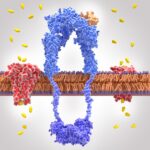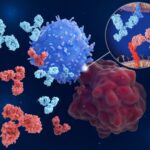No products in the cart
An Overview of CJC-1295 & Ipamorelin & GHRP-2 Blend

CJC-1295 Peptide
The growth hormone-releasing hormone (GHRH) is believed to be a natural regulator of somatotropin’s growth hormone. The replication of this hormone or its hypothetical derivatives has been a long-sought-after goal of research. This goal is speculated to improve cases of growth hormone deficiencies.
CJC-1295 peptide is a maleimido derivative of the first 29 amino acid sequences of the GHRH. A notable speculation about CJC-1295, which might distinguish it from other such derivatives, is that being a small molecular weight compound, it is considered to be more soluble and easier to produce on a large scale while potentially performing every necessary function GHRH might do.
CJC-1295 on Growth Hormone Release: The speculated impact of CJC-1295 exposure on growth hormone release is believed to be very different from that of other growth hormone secretagogues in two distinct ways. Firstly, it is speculated that CJC-1295 might expedite the increase in circulating growth hormone levels rapidly. Research suggests that a single introduction of CJC-1295 might bring up growth hormone (GH) levels to almost 2-9 times the normal within two hours in mice models of growth hormone deficiency. CJC-1295 is speculated to rapidly support the natural peaks and valleys of GH concentration that fit into the natural circadian rhythm.
Secondly, owing to its speculated mode of action, the CJC-1295 peptide is believed to cause the growth hormone levels to reach their physiologic maximum, but at the same time, it might keep the process regulated. This implies that the peptide might never let the levels reach a limit so high that it would start producing unintended physiological consequences.
Ipamorelin Peptide
Ipamorelin is believed to be a selective ghrelin receptor agonist with a speculated strong affinity for binding to ghrelin receptors. It is suggested to be one of the most particular growth hormone secretagogues. It is also believed to have varied actions on other vital hormones. These might include thyroid-stimulating hormone, cortisol, luteinizing hormone, prolactin, ACTH, and follicle-stimulating hormone.
GHRP-2 Peptide
GHRP-2 or Pralmorelin is believed to be a growth hormone secretagogue, i.e., it is speculated to act on the pituitary gland, potentially mimicking the action of GHRH and causing the release of growth hormone. It was one of the first growth hormone secretagogues introduced as a test peptide. GHRP-2 is speculated to bind to ghrelin receptors in the gastrointestinal tract and may potentially regulate many vital processes. Current speculative research tests its effects on sleep cycle, muscle cell growth, appetite regulation, and immune function modulation.
Disclaimer: The products mentioned are not intended for human or animal consumption. Research chemicals are intended solely for laboratory experimentation and/or in-vitro testing. Bodily introduction of any sort is strictly prohibited by law. All purchases are limited to licensed researchers and/or qualified professionals. All information shared in this article is for educational purposes only.





